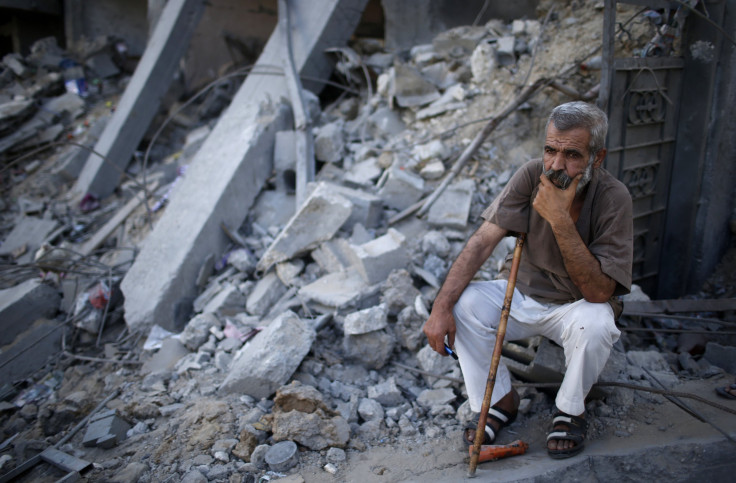How Long Did The Cease-Fire Last? The Average Truce Time In Gaza

In the 25 days since Israel’s assault on Gaza, which it calls Operation Protective Edge, began, only one humanitarian cease-fire has lasted for the agreed-upon length of time, which was 12 hours. Every other humanitarian truce was cut short, or never had the chance to start, because one or both sides resumed fighting. The average length of truces in Gaza: two and a half hours.
A cease-fire is defined as a “total cessation of armed hostilities” between groups; a pause in the killing and destruction while the two sides discuss a more permanent treaty. To calculate the average, we took the six most significant humanitarian cease-fires from the current conflict and recorded how much time passed from the declaration that a truce was starting, to the first gunfire, airstrike, rocket attack or death.
A truce agreed upon for an entire half-day was observed by both sides last Saturday. In Gaza, residents used the opportunity to leave shelters and assess the damage in their neighborhoods. The body count rose drastically during the pause in fighting, because bodies were finally being pulled out of the rubble.
However, when the Israelis pushed to extend the pause another five hours, they were met with almost immediate rocket fire from Hamas. Just hours later, Hamas said it had agreed to a new, 24-hour cease-fire. Israeli media reported that 15 minutes later, rockets were launched from Gaza.
The first attempted truce was a five-hour humanitarian cease-fire on July 17. United Nations envoy Robert Serry proposed the truce so that food and medical supplies could be brought into Gaza. At this point, the death toll was at least 213. Israel and Hamas both agreed to the truce; however, the Israel Defense Forces said mortar shells were fired from Gaza just two hours after the truce began.
On Tuesday, over the course of about 90 minutes the Palestine Liberation Organization declared a 24-hour Palestinian cease-fire, then said it could be 72 hours. Hamas rejected this deal, and Israel never responded. Thirteen Palestinians were killed in that time.
On Wednesday, Israel called for a four-hour partial humanitarian cease-fire. Hamas rejected the truce and rockets flew into Israel about five minutes after it began. At least 33 Palestinians died during this four-hour "truce."
The final attempt at a humanitarian truce was a United Nations and United States-brokered pause in fighting that was supposed to last 72 hours beginning Friday morning. It lasted about 90 minutes, leaving at least 50 Palestinians and two Israeli soldiers dead and one soldier captured.
According to data pulled from Visualizing Palestine, an infographic site about the Arab-Israeli conflict, and the pro-Palestinian Electronic Intifada news site, breaking cease-fires is an old habit for Hamas and Israel. Since the last Gaza truce in November 2012, Israel has violated the truce 191 times and the Palestinians have violated it 75 times, according to the site.
© Copyright IBTimes 2024. All rights reserved.






















